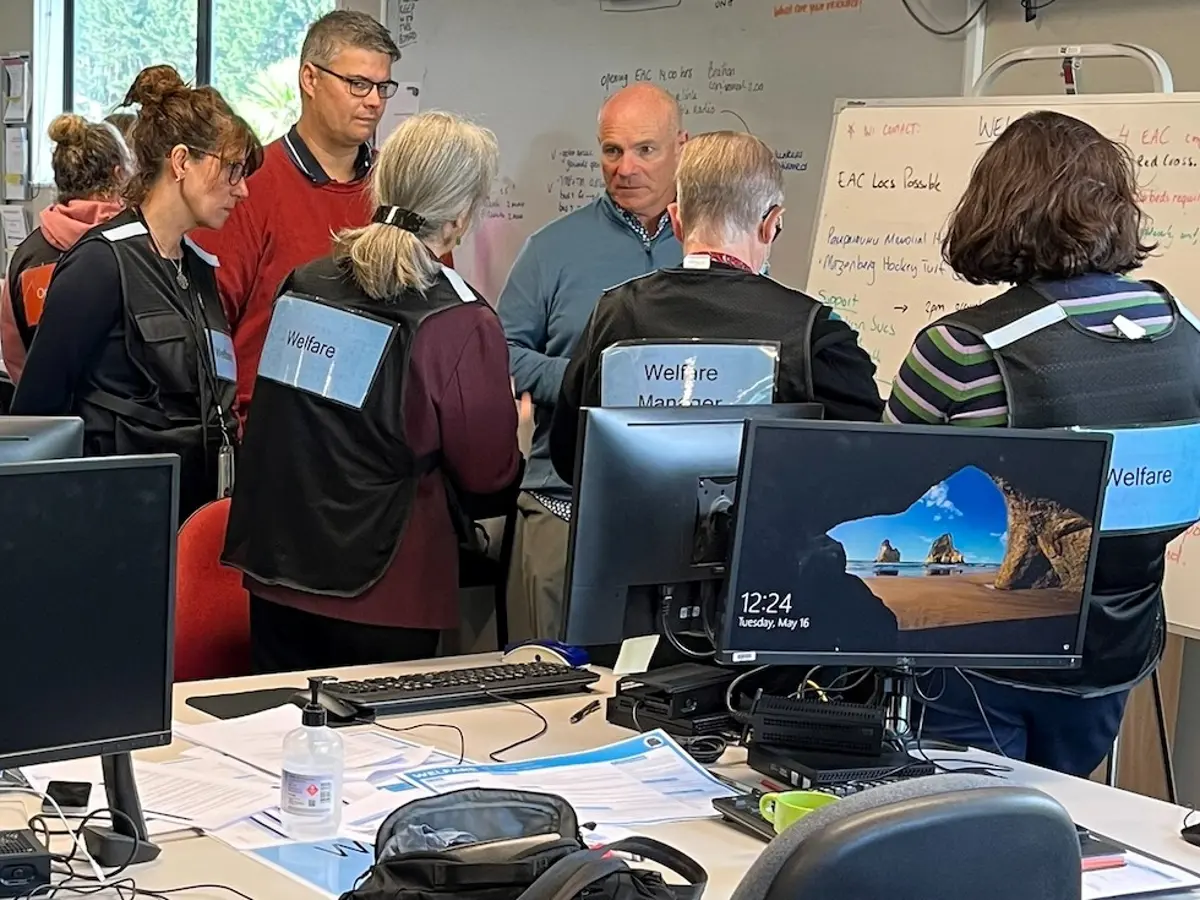Council emergency training turns up the tempo
18 May 2023, 2:45 PM
Kāpiti Coast District Council and regional emergency staff collaborated with government and volunteer agencies to turn up the tempo for their latest emergency response training exercise on Tuesday.
Alongside their day-to-day jobs, Council staff regularly train to activate and run Kāpiti Coast’s emergency operations centre (EOC) to manage a disaster response in the district. This time they took it a step further by setting up an emergency assistance centre (EAC) as well.
In the exercise scenario, an EAC was activated in Paraparaumu to receive hundreds of ‘evacuees’ from a ‘major wildfire’ in the Ōtari–Wilton bush threatening thousands of homes in Wellington. The ‘event’ was compounded by a ‘large earthquake’ that ‘closed a road’ and ‘isolated a community’ in Ōtaki Forks so the team practiced responding to a secondary event as well.
Council regulatory services group manager James Jefferson, who is one of the district’s controllers in an emergency, says emergency assistance centres are where people can go for initial shelter and care in a disaster.

Image: Council staff in the emergency operations centre (EOC) discuss what’s needed for setting up an emergency assistance centre (EAC) during a Kāpiti Coast District Council and Wellington Regional Emergency Management Office training exercise this week. See larger image [JPG 496 KB].
“At the EAC they will receive public information and be linked up with welfare agencies and others like insurers, for ongoing support.
“EACs also feed information directly from the community back to the EOC so help can be targeted to where it’s most urgent or needed.
“We’ve seen the important role EACs played in the recent Auckland floods and Cyclone Gabrielle responses.
“They’re different from community emergency hubs, which are a critical initial response in a disaster because they’re run by local people with local knowledge to help local neighbourhoods as a situation unfolds.
“An EAC is set up by the official response to work alongside community hubs, offering safety, food, and shelter.
“Government and voluntary agencies set up in the EAC to provide ongoing support for people who are affected. This is especially important if phones are down, or people have lost all their belongings and documents and need urgent help,” Mr Jefferson said.
The location of EACs vary depending on the situation but are generally large central facilities that people know such as sports centres, community halls, churches, or marae.
“The purpose of this week’s exercise was to further develop our emergency response capability and it worked really well. We learned more about what we need to do to prepare for and set up for agencies in an EAC, and what they’d be bringing to make the EAC effective.
“The key was getting other agencies involved. We’re grateful to Oranga Tamariki, Volunteer Kāpiti, Coast Access Radio, Neighbourhood Support, the Amateur Radio Club, Red Cross, and Council Animal Control for helping put us through our paces. They got a lot out of it too,” Mr Jefferson said.
“We have a tight, dedicated and talented team of Council staff who volunteer and train to help out in emergencies, but we also learned we need more people especially if we have to run an ongoing response such as the recent ones up north.”
The Wellington Regional Emergency Management Office (WREMO) runs regular training for the community to practice setting up and running community hubs in a disaster. To find out more or get involved look for community emergency hubs on the WREMO website Community Emergency Hubs.